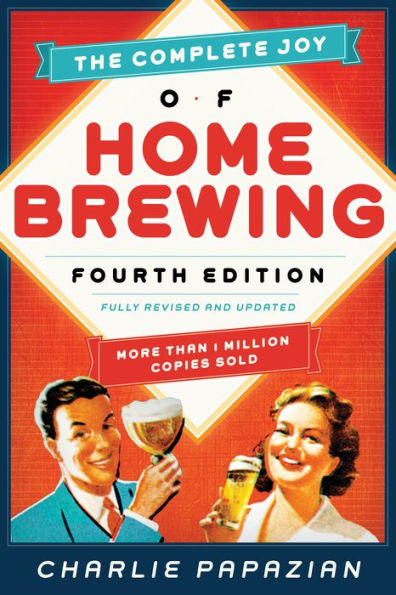All it takes to become a modern-day polymath is a bit of light reading—or, a lot of heavy reading. If you read the books on this list and pay attention, you’ll walk away able to discuss just about anything with the confidence of an expert. We’re not saying these books represent the sum total of […]
The homebrewer's bible—everything you need to know to brew beer at home from start to finish, including new recipes, updated charts on hop varieties, secrets to fermentation, beer kit tips, and more—from the master of homebrewing
The Complete Joy of Homebrewing is the essential guide to understanding and making a full range of beer styles, including ales, lagers, stouts, pilseners, dubbels, tripels, and homerun specialty beers and meads. Everything to get started is here: the basics of building a home brewery, world-class proven recipes, easy-to-follow brewing instructions, and the latest insights in the art and science of brewing. Master brewer Charlie Papazian also explains the history and lore of beer, reveals the technology behind brewing, and shares countless tips on how to create your own original ales and lagers.
This completely revised and updated edition includes:
- An expanded and updated Beer Styles and Homebrew Recipe Formulation chart with easy-to-understand descriptions of key flavor and aroma characters
- Ingredient information for fifty-three beer styles
- A list of more than seventy-five beer types describing strength, hop aroma, bitterness, flavor, color, sweetness, and alcohol percentage
- Expanded chart on sixty-eight hop varieties, descriptions, and uses
- Eighty brand-new and revised favorite beer and mead recipes
- Beer kit tips
- Key information about using and understanding hops
- Revealing reasons why homebrew is the best . . . and much more!
Paired with the newly revised Homebrewer's Companion, Second Edition, this book will transform you from beginning brewer to homebrewing expert.
The homebrewer's bible—everything you need to know to brew beer at home from start to finish, including new recipes, updated charts on hop varieties, secrets to fermentation, beer kit tips, and more—from the master of homebrewing
The Complete Joy of Homebrewing is the essential guide to understanding and making a full range of beer styles, including ales, lagers, stouts, pilseners, dubbels, tripels, and homerun specialty beers and meads. Everything to get started is here: the basics of building a home brewery, world-class proven recipes, easy-to-follow brewing instructions, and the latest insights in the art and science of brewing. Master brewer Charlie Papazian also explains the history and lore of beer, reveals the technology behind brewing, and shares countless tips on how to create your own original ales and lagers.
This completely revised and updated edition includes:
- An expanded and updated Beer Styles and Homebrew Recipe Formulation chart with easy-to-understand descriptions of key flavor and aroma characters
- Ingredient information for fifty-three beer styles
- A list of more than seventy-five beer types describing strength, hop aroma, bitterness, flavor, color, sweetness, and alcohol percentage
- Expanded chart on sixty-eight hop varieties, descriptions, and uses
- Eighty brand-new and revised favorite beer and mead recipes
- Beer kit tips
- Key information about using and understanding hops
- Revealing reasons why homebrew is the best . . . and much more!
Paired with the newly revised Homebrewer's Companion, Second Edition, this book will transform you from beginning brewer to homebrewing expert.

The Complete Joy of Homebrewing: Fully Revised and Updated
496
The Complete Joy of Homebrewing: Fully Revised and Updated
496Related collections and offers

Product Details
| ISBN-13: | 9780062215765 |
|---|---|
| Publisher: | HarperCollins |
| Publication date: | 10/21/2014 |
| Series: | Homebrewing |
| Sold by: | HARPERCOLLINS |
| Format: | eBook |
| Pages: | 496 |
| Sales rank: | 586,540 |
| File size: | 60 MB |
| Note: | This product may take a few minutes to download. |
